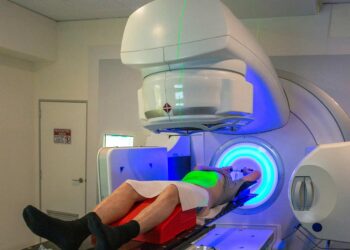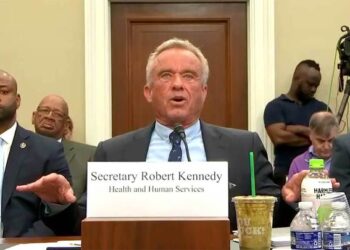When he was young, Jason Krastein remembers his father, a nephrologist, coming home from the hospital to compile patient notes and pre-chart for the next day before spending time with the family. As a fourth-year medical student, Krastein is repeating that pattern.
“Charting at home is one of those things no one really tells you about in medical school,” said Krastein, who is finishing his studies at George Washington School of Medicine in Washington, DC. “You think when you leave the hospital, you’re done for the day, but you’re not. There are notes to finish, labs to follow up on, and patients to think about for tomorrow. Even when I’m sitting on my couch, I’ll have my laptop open, typing away. It’s this constant pull.”
About Our Research
Medscape continually surveys physicians and other medical professionals about key practice challenges and current issues, creating high impact analyses. For example,
Medscape’s Medical School Experience Report 2024 found that
- 53% of med school respondents would recommend their medical school.
- 28% of respondents were very satisfied with their med school experience.
- 8% were somewhat dissatisfied with their instructors.
- 56% of med students were somewhat prepared for residency.
- 30% were very confident their Match Day would be successful.
For Krastein and other medical students, there’s a hidden curriculum in medical school: Unwritten, informal lessons, and values learned outside of formal academic settings that shape the culture of medicine, influence behavior, and how to approach patient care and professional relationships.
The hidden curriculum may teach resilience, emotional intelligence, and a deeper understanding of the human side of medicine. These lessons may unfold in informal moments, conversations during rounds or with patients, observing faculty handling difficult cases, or seeing how peers and mentors navigate challenges.
A few fourth-year medical students from around the country shared personal examples of the hidden curriculum that med schools don’t teach.
Hierarchy in Healthcare
“Every hospital and every specialty have a unique system of how students, residents, and attendings interact,” said Jake Graff, who is finishing his studies at the Noorda College of Osteopathic Medicine in Provo, Utah.
“I don’t know if I was taught anything regarding this formally or informally, but while on rotations, I would watch how other students and residents interacted and would mirror my behavior accordingly.”
Unspoken Rules
Students aren’t always privy to the protocols and preferences of individual hospitals and residency programs, said Graff, who is also chair of the medical student council of the American Academy of Emergency Medicine. “For me, most of my uncovering of the unspoken rules has been through trial and error.”
For example, Graff rotated through a hospital system that used a certain type of suture for laceration repairs. “This was the absolute opposite of what I had been taught at a previous rotation site and from previous attendings.”
The first laceration repair Graff completed, he realized the resident and attending wanted a different suture. Graff’s decision didn’t influence the patient’s recovery. “But I could tell I had made a mistake. I ended up changing how I performed laceration repairs at this site to comply with their culture.”
Communication Nuances
During her ob/gyn rotation, Kate Spencer realized that not all babies were born to excited and engaged parents. “Many were born to parents with decked out nurseries awaiting them at home.” But others were born to teenage parents or those struggling financially, said Spencer, who is in her final year at Drexel University College of Medicine in Philadelphia.
“The subtle cues I received during rounds, things I picked up on in the labor and delivery room, all shape [parents’] reaction to a delivery,” and consequently, how Spencer gauged her bedside manner.
Medical Jargon
Spencer told Medscape Medical News that she also tries to empathize with her patients and their limited knowledge of medicine.
“Being hospitalized is very overwhelming, especially for patients who are not medically literate. She can pick up quickly when patients might not understand what’s happening.
“Some are embarrassed and ashamed,” Spencer explained. Others may want to go back to sleep or believe they are inconveniencing her by asking for further explanations.
She takes time to simplify medical terms for her patients and carefully details their treatment. “If I do not think they fully understand, I ask them to repeat what I explained to them to make sure that we are on the same page. When you put your health into the hands of other people, imagine how much more stressful it is when you are not sure what is happening or why it is happening.”
Advocating for Patients
While providing clinical care, Roosha Mandal noticed the often-impersonal nature of medicine. “I found myself feeling on edge when patients were just referred to as their conditions or illnesses by other medical providers when I had the wonderful opportunity to get to know them as people,” said Mandal, who is in her final year at the University of Illinois College of Medicine in Chicago.
“As a student with extra time compared to residents and attending physicians, I have made it a point to not only learn about my patients’ health conditions, but what is important to them in their everyday lives. On team rounds, I sometimes felt like I was providing ‘insider’ knowledge about someone’s family or living situation that really could have been easily parsed out through a short conversation,” she said.
Mandal said that working in an urban healthcare setting also allowed her to see that patients with limited resources had difficulty continuing their medical care after leaving the hospital.
“One patient in particular that I followed was working through opioid [use] disorder in the midst of losing his job and stable housing. Although our discussions on his medical care often circulated around addiction, I often wondered what the point of follow-ups or testing would be if he didn’t have transportation or stable support systems. Even in my short time involved in his care, I focused on social aspects influencing his medical care, such as connecting him to safe housing and mobile harm reduction services close to where he lived.”
Ethical Gray Areas
End of life discussions are among the ethical gray areas students navigate outside their formal training environment. Graff said patients with Do Not Resuscitate (DNR) or Do Not Intubate instructions may still require medical intervention.
“Exploring what the patient would want in conjunction with [their] next of kin can be intimate and challenging discussions. DNR does not mean Do Not Treat, but making sure the ED [emergency department] team and the family are on the same page is essential.”
Dealing with Loss
Krastein recounts his first end-of-life conversation with a patient and his family. “After a lot of discussion, they decided to stop treatment and focus on comfort care. He wanted to spend his final days at home, not in a hospital bed surrounded by beeping monitors.
“I remember walking out of that room with a strange mix of emotions: Pride that I had been able to help guide such an important conversation, but also a deep sadness,” Krastein said.
“It was the right decision for him, and I truly believed in it, but knowing that he was leaving the hospital to go home and die wasn’t something I could just shake off. That night I sat with the weight of it, thinking about the man, his family, and the trust they had placed in me and my team during such a vulnerable moment.”
Krastein noted that medical school teaches students how to care for patients and diagnose and treat, but not how to cope with feelings when someone they’ve cared for dies.
Emotional Resilience
“Like most students, I have had days with challenging cases, hard patients, and a never-ending waiting room. One of the best attendings I worked with always seemed to say, ‘Let’s go grab some food’ at the right moment. During our walk to the cafeteria and back, she would subtly talk about her challenges and how she got through them. She focused on loving patients, showing up, being a professional, and getting the job done. As a young medical student, hearing that was inspiring, and I never went back to work frustrated.”
Work-Life Balance
Krastein described coming off a 24-hour ob/gyn call, walking to his car as the sun rose. “The night had been relentless — emergency C-sections, managing complications, and running from one room to the next. By the time the shift ended, I couldn’t even remember the last time I’d eaten or sat down,” he recalled.
“Driving home, I felt like a shell of myself, completely drained. I told myself I’d decompress when I got home, but instead, I crashed on my bed, still in scrubs, waking up hours later disoriented and more tired than before. It wasn’t just the physical toll that hit me; it was the growing sense of detachment. I started to realize that I wasn’t feeling the same joy or fulfillment I used to, even after successful deliveries or positive outcomes. That was the first time I recognized the signs of burnout creeping in when exhaustion started overshadowing everything else.”
Medical training even required him to miss a best friend’s wedding. “I was scheduled for a 24-hour trauma surgery call. I tried everything — switching shifts, finding coverage — but there was no way around it. That day, while managing one emergent case after another in the OR [operating room], I kept thinking about the ceremony I was missing.
“Later that evening, during a rare moment to sit, I scrolled through Instagram stories of them celebrating, feeling the sting of missing such a milestone. Medicine is full of these sacrifices — birthdays, weddings, holidays — even just a quiet evening with family. The hardest part is knowing that life doesn’t pause while you’re tied to your responsibilities, and sometimes you have to make peace with being absent from moments that matter most.” That’s something medical school doesn’t teach you.
Roni Robbins is a freelance journalist and former editor for Medscape Business of Medicine. She’s also a freelance health reporter for The Atlanta Journal-Constitution. Her writing has appeared in WebMD, HuffPost, Forbes, New York Daily News, BioPharma Dive, MNN, Adweek, Healthline, and others. She’s also the author of the multi-award–winning Hands of Gold: One Man’s Quest to Find the Silver Lining in Misfortune.
Source link : https://www.medscape.com/viewarticle/hidden-curriculum-medical-school-what-they-dont-teach-you-2025a10003xh?src=rss
Author :
Publish date : 2025-02-14 12:34:59
Copyright for syndicated content belongs to the linked Source.














